Mpala: Solar Camel Clinic Innovation
- Global Health
- Social Entrepreneurship
- Sustainable Development
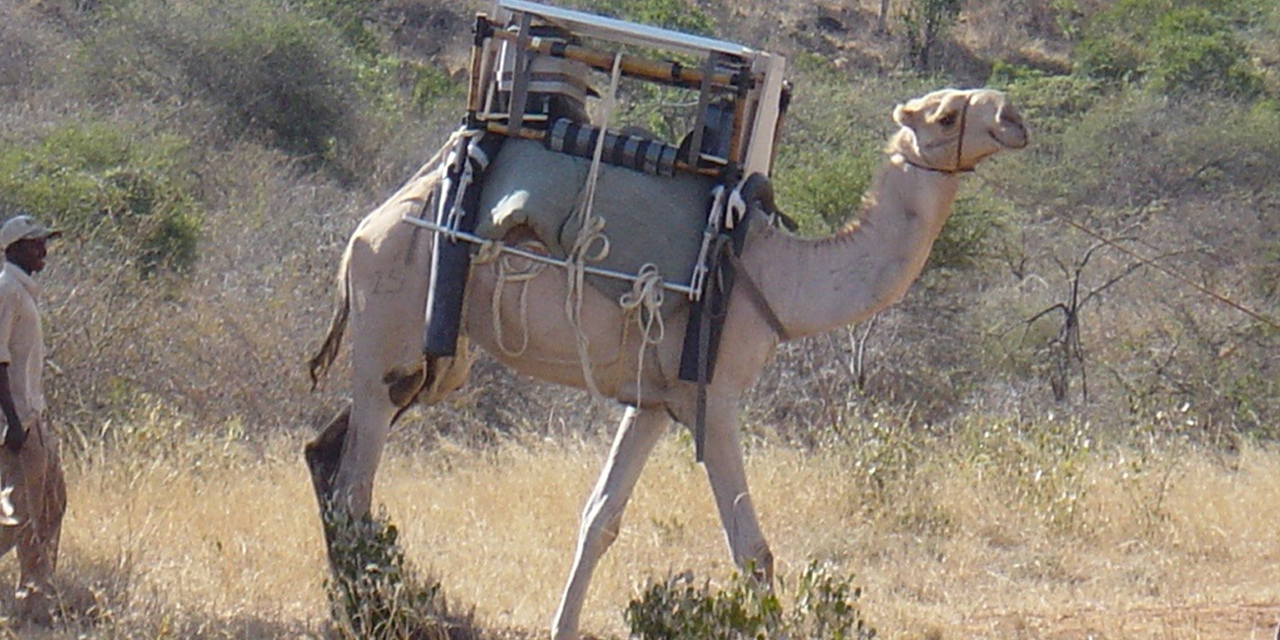
Summer 2007
An ongoing multi-level project which begin with Designmatters partnership with the Community Health Africa Trust (CHAT) in Kenya, to develop an innovative design project to improve health services for remote Kenyan communities.
Overview
The Community Health Africa Trust (CHAT) is a Kenyan registered Community Based Organisation (CBO), which is located in the Laikipia region of Northern Kenya. This organization was established in 1999 and originally formed part of a community outreach program for those communities surrounding the world-renowned Mpala Ranch in the Laikipia region. At its inception, this project was known as the Mpala Mobile Clinic, which operated under the auspices of the Mpala Community Trust.
Designmatters at Art Center has partnered with CHAT, to develop an innovative design project aimed at greatly improving health outcomes in remote Kenyan communities.
The partnership resulted in an original proposal, Integrated Mobile Health Clinics for Remote Communities in Kenya, which was selected from more than 2,900 projects as one of the 105 finalists in the prestigious Development Marketplace competition, sponsored by the World Bank in May 2007. With the motto “Turning ideas into action,” this international grant competition funded creative, entrepreneurial development projects that have the potential to be expanded or replicated.
In the Laikipia and Samburu districts of northwest Kenya, remote, poverty-stricken communities suffer from a lack of medical care, as well as access to education and family planning. CHAT’s existing integrated mobile health clinics make use of trucks, camel convoys, bicycles and foot travel to bring “door-to-door” service to these scattered, nomadic people. Based on evaluation of the current program, Designmatters and CHAT have developed a multi-component design intervention to the existing mobile clinic operation.
Key Innovation Components of the Project
• A multi-function, camel-packaging system to improve efficiency of mobile clinics
• New solar-powered refrigeration units or transport by camel to carry vaccines and medicine requiring refrigeration
• Introduction of culturally appropriate Information, Education & Communication (IEC) health materials
• Integration of solar panels into clinics, providing power for lighting and refrigeration, and to operate monitors and video equipment for IEC health education sessions
Princeton University’s Institute of Science and Technology of Materials (PRISM), which served as a consultant during the earlier stages of the proposal, is collaborating closely with Art Center to refine prototypes of the camel pack, which is in its second phase of field testing in Kenya. Project Concern International (PCI), a nonprofit global health organization based in San Diego, California, has also partnered with Art Center and will conduct additional field testing of the prototype through their program in Ethiopia.
In Fall 2007, IEC health materials were created through a Transdisciplinary Studio hosted by the Department of Illustration at Art Center. Pilot testing of the resulting educational visuals is currently in progress in Kenya.
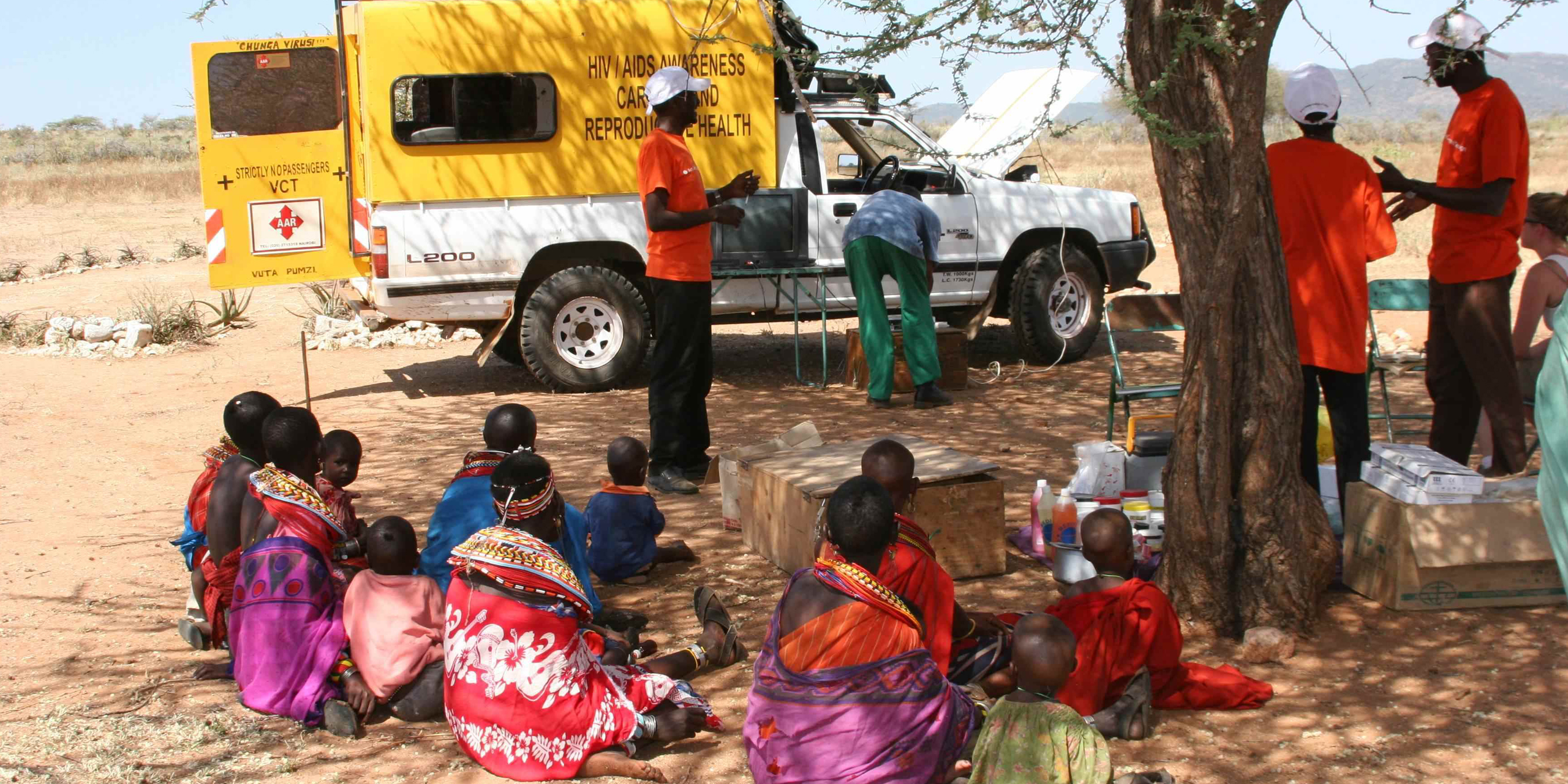
The Challenge
Packaging and Transport
The loads that the camels bear are tied using sisal rope, which cuts into the animals’ skin, causing discomfort. Cumbersome packaging causes further stress and allows loads to shift during transit.
The Solution
Efficient Packaging and New Applications for Solar Power
The new design that Art Center is producing in partnership with Princeton’s Institute of Science and Technology of Materialsconsists of a streamlined packaging scheme, redesigned medicine boxes to compartmentalize supplies, and a new, ergonomic frame for the camels. Each frame is made of hardened aluminum, which is lightweight but strong, able to support up to 136 kg. The frame contours to the camel’s body, providing a tighter fit that allows the camel to easily carry the solar panels necessary to power the refrigeration system during transport. The solar panels are lightweight, unbreakable and made of a foldable canvas material. In transit, the panel can be deployed so that it powers the camel-pack refrigeration system. Once the camel convoy arrives at the remote site, the panel can be used in combination with larger solar panels to provide power for the health clinic. A foot-powered system provides backup, as well as a means of providing light in the clinic during extended operational hours when solar power is not available.
The system improves the efficiency of the loads carried by the camel caravans that navigate the rugged terrain where CHAT operates, and the new long-range solar-powered refrigeration units proposed would eventually allow the clinic to deliver crucial vaccines and medicines that are currently inaccessible to distant recipients. The project blends relatively affordable technologies (use of flexible solar panels to power batteries for portable refrigeration units) with the application of advanced engineering and design, and an overall people-centered approach to service delivery. After several months of development that has taken place in the labs of Princeton, the prototype is now undergoing final stages of refinement for ease of assembly, stability and durability. In March and April 2008, a number of sessions and fittings of the saddle system on camels at the Bronx Zoo have in this regard provided key insight to the team.
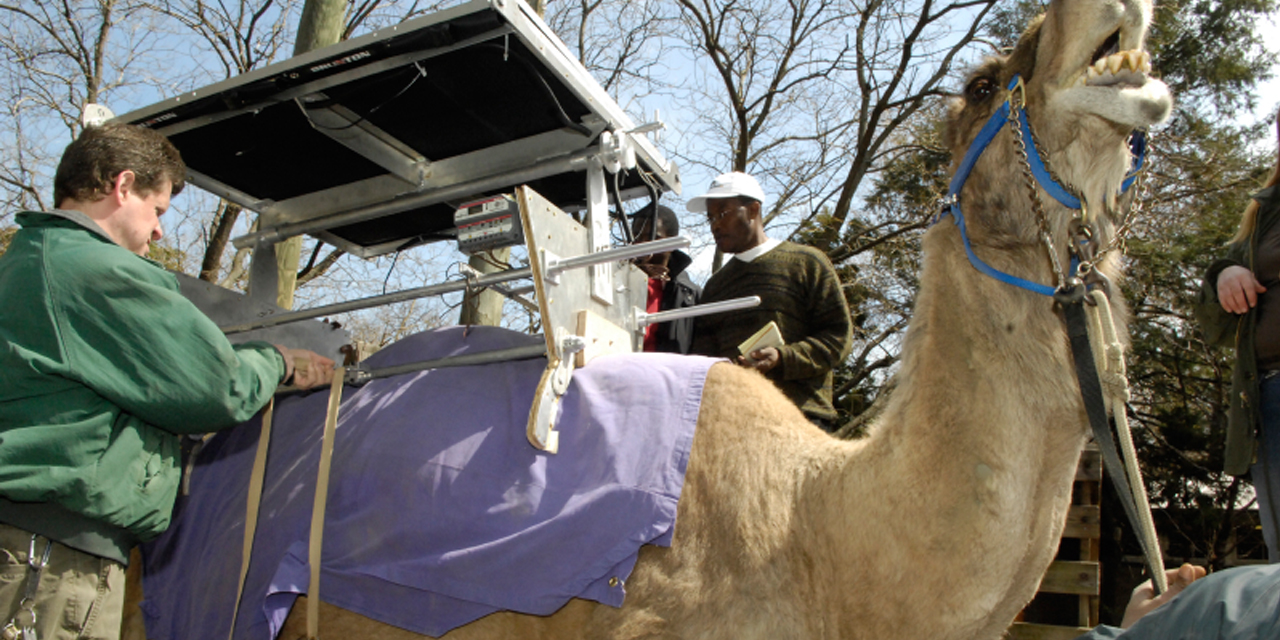
The Mpala Project’s success started and ended with the same idea: keeping an open mind. We began by asking the students to look inside themselves to try to gain an understanding of what they believed—about illustration, about semi-literate people, about people of Kenya, about nomadic tribes, and about themselves. This turned into a conversation that lasted the whole semester.
—Esther Pearl Watson, Illustration Faculty
Health Education Materials
Art Center developed an Information, Education & Communication (IEC) campaign designed to increase the effectiveness of an integrated health education program. These visually based IEC materials will overcome barriers of non-literacy, multiple language and ethnicities, offering relevant messages closely relating to and reflecting the culture of the local population.
The IEC health materials follow best practices as documented by the World Health Organization, UNICEF and others, to help reinforce verbal communication, create demand for services, and drive change in attitudes and behaviors.
This visual campaign was developed in Fall 2007 through an Art Center studio hosted by the Department of Illustration. Informed by the field-work and research collected in Kenya by the Art Center team, students created multi-platform systems of delivering culturally appropriate health education to a primarily illiterate and isolated population. Through the IEC campaign, nomadic tribes in Kenya who have no access to health care will be given information on HIV/AIDS prevention, family planning, as well as other basic health education. The final materials developed were compiled into a book, Images Speak, winner of the Art Directors Club Silver Cube and the Corbis Creativity for Social Justice Award (see the Art Directors Annual 88).
Sub-Sahara Africa is the epicenter of the global AIDS epidemic and is suffering from overpopulation and extreme poverty. It is anticipated that this visually based campaign will contribute to providing the education necessary to help overcome this unsustainable reality. The overall goal of this project is to develop health education messages that not only reach these Kenyan communities but can also be delivered to other regions.
Impact
Benefits
Health, Nutrition and Population Outcomes
In the near future, Art Center, CHAT and Nomadic Communities Trust NCT expect to bring a range of services to approximately half a million people in Laikipia and Samburu. Health education and practices will be greatly improved. Thanks to new modes of refrigerated delivery, important drugs will be available for the first time. People living with HIV/AIDS will benefit from improved nutrition, enabling them to begin treatment. Local communities will have access to family planning and health education materials with culturally sensitive messaging delivered in the languages spoken in the region. The prototypes of these health education materials are currently undergoing field testing in Kenya.
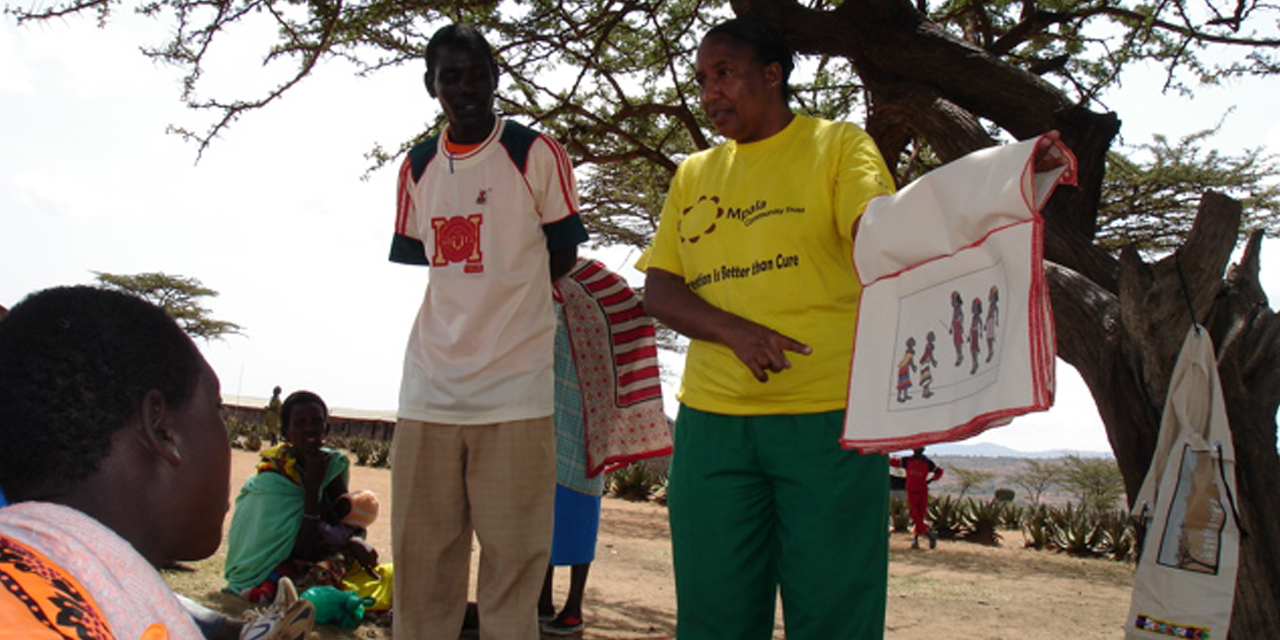
About the Partner
Community Health Africa Trust (CHAT) and Nomadic Community Trust (NCT)
Community Health Africa Trust, a community-based organization and charitable trust, was founded in 2000 to provide mobile health clinic services to underserved, remote communities in the Laikipia district of Kenya. CHAT is supervised by founder and Programme Coordinator Sharon Wreford-Smith, who oversees clinic administration and program implementation. Nomadic Communities Trust was founded by Wreford-Smith in 2005 to expand services to the Samburu District and pioneer the use of camels in the context of mobile clinics.
Background information
What is the geographic and demographic status of this region?
Laikipia is one of the 71 districts of Kenya. It is located in the center of the country and is home to a diverse population of ethnic communities. The district is roughly the size of Wales, with a total population of about 322,000, 80 percent of which live in rural, often isolated areas. The most prominent communities are the Samburu and Turkana, though other groups live in the region and several languages are spoken, despite the estimated 75 percent illiteracy rate. Tourism and agriculture are the keys to the economy, but much of the rural population depends on livestock for food and the little money they earn. These peoples’ lives are largely shaped by the search for water and grazing land for their animals, thus the prevalent nomadic lifestyle. Much of the terrain is harsh and inhospitable, with few maintained roadways, making travel between urban centers and the vast, remote areas of this district extremely difficult. Community Health Africa Trust began operating mobile health clinics in Laikipia in 2000, and has provided over 300,000 units of medical and health education service.
Samburu district is located north of Laikipia and is roughly the size of Israel. Population totals about 165,000, with Samburu, Turkana and Rendille communities most prevalent. Several main languages are spoken, though 80 percent of the population is illiterate, creating communication and education challenges. Only 3 percent of the land in Samburu is cultivated for crops and, as in Laikipia, most of the population is comprised of nomadic pastoralists. Samburu is extremely isolated—even more so than Laikipia—with not a single tarmac road in the entire district. Due to their severe isolation, the population has had little access to health care and health education, until Nomadic Communities Trust (NCT) began providing services in 2005 using camel convoys as part of their integrated mobile health clinic system, providing more than 60,000 units of service to date.
How has it been established that these Kenyan communities live in severe poverty?
The World Bank has established that people who live on less than $1 per day are in extreme poverty. Systemic causes and consequence of extreme poverty include hunger, lack of shelter, illiteracy, child mortality, joblessness, political powerlessness, and poor or non-existent healthcare.
What is the value of CHAT’s community-based approach to mobile healthcare?
People in this region of Kenya adhere strongly to traditional customs. CHAT has learned that in order to communicate with and effectively serve these communities, it is imperative to work through peer leaders and employ locals who speak the different tribal languages and can understand tribal customs. Ultimately, CHAT plans to empower communities to adapt the mobile healthcare approach to their way of life so that they can operate with relative independence.
How does integrated mobility work?
Vehicles transport supplies to camels, and camels transport supplies to remote areas, where local health staff travel by bicycle and foot between camel camps and communities, providing “door-to-door service.” Traditional camel transport is efficient and cost-effective on these trips, which typically last two to three weeks. Other organizations have attempted to deliver services to remote communities in Kenya, but none have succeeded. Vehicles have also been used to deliver health services, but because they have not been integrated with camels and bicycles, these efforts have failed to undertake the final leg of the journey to remote communities.
What does the mobile health clinic technology consist of?
The system Art Center has developed uses a lightweight (4.5kg) 70-watt unisolar multi-junction panel to create the energy needed to cool medicine carried by camels in a 12-volt dc-powered refrigeration unit, with excess power going to a 50-amp-hour sealed lead battery. The multi-junction solar panel is unique and practical for the camel clinic system: it is flexible, lightweight, unbreakable and made of a foldable canvas material.
What is PRISM?
Princeton Institute of Science and Technology Materials is a multidisciplinary research center at Princeton University. Its focus is the general field of materials science, particularly photonics, with a special emphasis on the hard material-soft material interface. Its mission includes graduate and undergraduate education and research that will have a long-term impact on society. Key elements of PRISM are the integration of work in the sciences and engineering with efforts outside Princeton. For this project, PRISM is contributing expertise in the development of the solar systems.
Why camels?
Camels are able to traverse arid distances, carry heavy loads and manage the inhospitable terrain, in good weather and bad. They don’t break down. They don’t run on increasingly expensive gas. They are marvels of natural engineering that can go without water for periods of time that would mean the death of a lesser beast. In this part of Kenya, they have the added benefit of being familiar domestic animals to the local people CHAT and NCT are striving to reach. Camels gracefully complement a community-based approach to both healthcare delivery and family-planning education.
Can this system be replicated?
There is enormous potential to expand and replicate the Integrated mobile health clinic model within any poor, rural area where camels or other pack animals are found and people are not served due to remote location. The basic mobile-clinic structure and product-design technology can also be replicated in isolated, largely inaccessible regions throughout world. The concept is relatively simple: engage indigenous people and load-bearing animals to provide direct healthcare to underserved populations, training local community members in key roles to facilitate service delivery. The model has the potential to empower communities to eventually establish systems for their own basic healthcare. The model can also lead to expansion of economic opportunity. The camel backpacks could easily be altered to fit other animals such as donkeys or horses. Technologies and IEC health materials can be designed to accommodate regional and cultural needs. This way, isolated communities throughout the globe can access services formerly unavailable to them—especially childhood immunizations which are a recognized universal right, but require refrigeration.
Camel Packaging System
Camels are loaded with non-compartmentalized wooden boxes of medicine, leading to jostling and breakage on convoys. The new camel packaging system will ease loading and unloading and enhance stability. The compartmentalized, solar-powered refrigeration units will allow for safe transport of medicines requiring refrigeration.
Mpala service vehicle in the Samburu village of Lpussi. An AIDS-awareness music video, produced in Swahili for an urban audience, is the only teaching tool the community-based CT counselor has had to educate the population about how to stop the spread of HIV.
An ergonomic camel backpack design provides more secure transport of the mobile clinic’s cargo. The frame is hardened aluminum, both lightweight and supportive of up to 136 kg of cargo. Hinges allow the pack to contour to the camel’s body. The tighter fit prevents cargo from shifting during transport.
The camel backpack serves as a support system for the camel convoy’s solar panel system. Adjustable straps keep solar panels in an above-ground position; angle can be adjusted to align with the sun’s rays. The camel backpack frame converts to chair for community dialogue at clinic camp. This multi-functional system is intended to adapt cargo to multiple usages based on clinic needs.
The clinic gazebo structure houses a bed, two clinical tables, four chairs, a flat-screen TV in its storage casing, a freezer box, cooler box and dry medicine box. The gazebo also houses an electric inverter and battery, connected to the solar panels on the clinic’s exterior. Outside the clinic are two free-plate foot-powered generators that act as backup for the solar-powered system.
Camel Prototype Development
Bronx Zoo
A full year of development and testing of the camel saddle prototype with personnel at the New York Bronx Zoo allowed the team to work on several adjustments and changes necessary for the system to be lighter and maximize power efficiencies.
Ongoing Field Testing
In March 2009, the project team led by Winston O. Soboyejo with Niyi Olubiyi (Princeton Institute for the Science & Technology of Materials Mechanical & Aerospace Engineering Princeton University) and Art Center alumnus and lead product designer Patrick Kiruki left with two prototypes that were tested in Afar, Ethiopia with field personnel from Project Concern International and back to Nanyuki, Kenya, and to the organization that first inspired the collaboration: Community Health Africa Trust(formerly known as Mpala).
Currently, the Princeton team continues to gather data from CHAT AND NCT, which is working toward deploying the prototypes as part of their regular convoys in the region.
Mobile Health Clinic in the News
Links
-
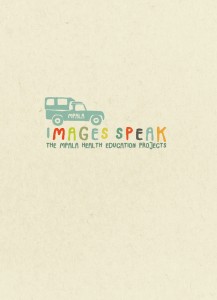
-
Image Speak Book
Download PDF